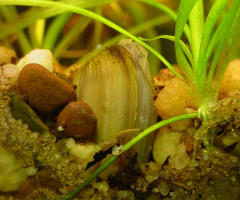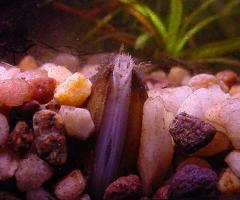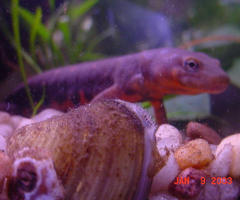The gill filaments function in respiration, and they fuse to form sheets of
tissue that function as a net or sieve. The cilia move particles toward and
into various "food or rejection grooves". These food grooves sort the
particles by density and size. Acceptable foods, such as phytoplankton, are
small and light. The food is transferred to grooves going into the mouth,
while rejected particles, often sediment particles which are heavy or larger,
are shunted into grooves leading to the bottom edge of the gills. Here they
are wrapped up in mucus to form a small mucoid blob and dropped off the
edge of the gill as a piece of "pseudofeces." Pseudo- or "false" - feces
look much like the real thing and accumulate with actual feces in the bottom
of the clam’s mantle cavity. Periodically the clam claps its shells together
blowing both the feces and the pseudofeces out of the excurrent siphon.
- Ronald L. Shimek, Ph. D.
|




